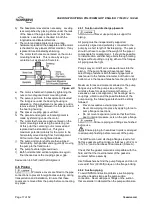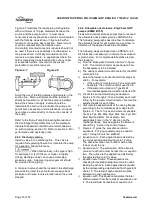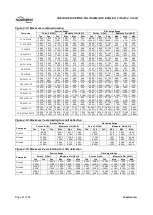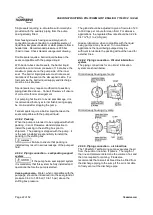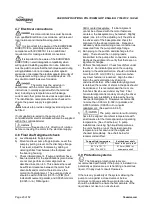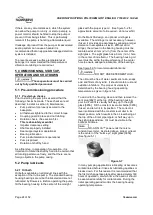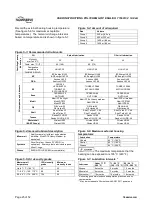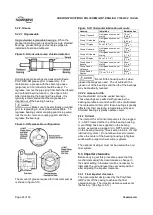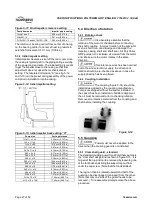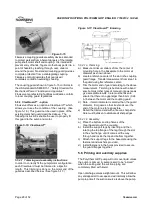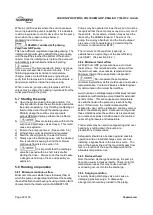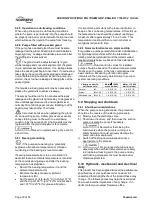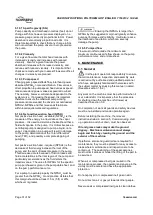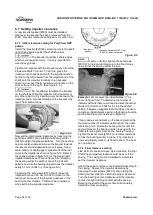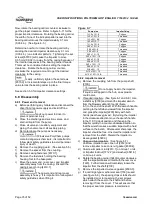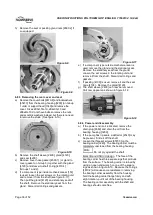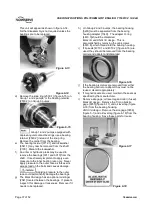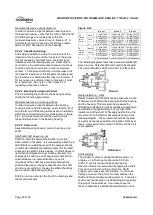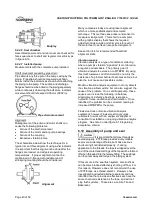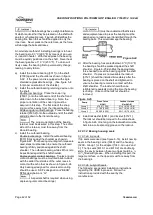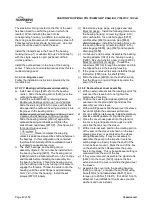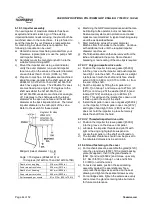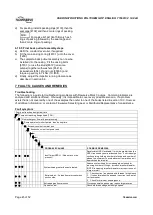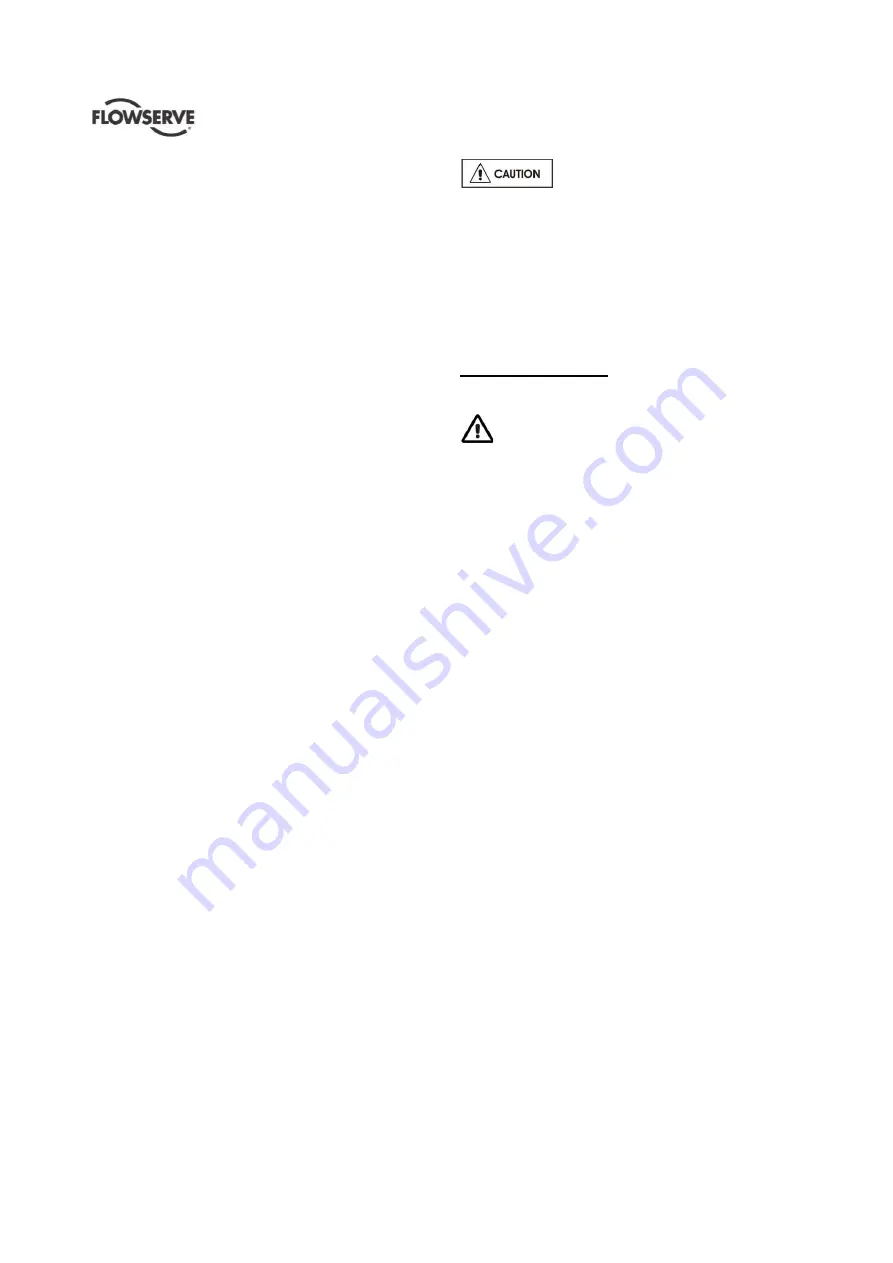
USER INSTRUCTIONS POLYCHEM GRP ENGLISH 71569132 12-04A
Page 31 of 52
flowserve.com
5.10.1 Specific gravity (SG)
Pump capacity and total head in metres (feet) do not
change with SG, however pressure displayed on a
pressure gauge is directly proportional to SG. Power
absorbed is also directly proportional to SG. It is
therefore important to check that any change in SG
will not overload the pump driver or over-pressurize
the pump.
5.10.2 Viscosity
For a given flow rate the total head reduces with
increased viscosity and increases with reduced
viscosity. Also for a given flow rate the power
absorbed increases with increased viscosity, and
reduces with reduced viscosity. It is important that
checks are made with your nearest Flowserve office if
changes in viscosity are planned.
5.10.3 Pump speed
Changing pump speed effects flow, total head, power
absorbed, NPSH
R
, noise and vibration. Flow varies in
direct proportion to pump speed, head varies as speed
ratio squared and power varies as speed ratio cubed.
The new duty, however, will also be dependent on the
system curve. If increasing the speed, it is important
therefore to ensure the maximum pump working
pressure is not exceeded, the driver is not overloaded,
NPSH
A
> NPSH
R
, and that noise and vibration are
within local requirements and regulations.
5.10.4 Net positive suction head (NPSH)
Net positive suction head - available (NPSH
A
) is the
measure of the energy in a liquid above the vapor
pressure. It is used to determine the likelihood that a
fluid will vaporize in the pump. It is critical because a
centrifugal pump is designed to pump a liquid, not a
vapor. Vaporization in a pump will result in damage
to the pump, deterioration of the
Total differential
head
(TDH), and possibly a complete stopping of
pumping.
Net positive suction head - required (NPSH
R
) is the
decrease of fluid energy between the inlet of the
pump, and the point of lowest pressure in the pump.
This decrease occurs because of friction losses and
fluid accelerations in the inlet region of the pump and
particularly accelerations as the fluid enters the
impeller vanes. The value for NPSH
R
for the specific
pump purchased is given in the pump data sheet, and
on the pump performance curve.
For a pump to operate properly the NPSH
A
must be
greater than the NPSH
R
. Good practice dictates that
this margin should be at least 1.5 m (5 ft) or 20%,
whichever is greater.
Ensuring that NPSH
A
is larger than
NPSH
R
by the suggested margin will greatly enhance
pump performance and reliability. It will also reduce
the likelihood of cavitation, which can severely
damage the pump.
5.10.5 Pumped flow
Flow must not fall outside the minimum and
maximum continuous safe flow shown on the pump
performance curve and or data sheet.
6 MAINTENANCE
6.1 General
It is the plant operator's responsibility to ensure
that all maintenance, inspection and assembly work
is carried out by authorized and qualified personnel
who have adequately familiarized themselves with
the subject matter by studying this manual in detail.
(See also section 1.6.2.)
Any work on the machine must be performed when it
is at a standstill. It is imperative that the procedure
for shutting down the machine is followed, as
described in section 5.9.
On completion of work all guards and safety devices
must be re-installed and made operative again.
Before restarting the machine, the relevant
instructions listed in section 5,
Commissioning, start
up, operation and shut down,
must be observed.
Oil and grease leaks may make the ground
slippery. Machine maintenance must always
begin and finish by cleaning the ground and the
exterior of the machine.
If platforms, stairs and guard rails are required for
maintenance, they must be placed for easy access to
areas where maintenance and inspection are to be
carried out. The positioning of these accessories
must not limit access or hinder the lifting of the part to
be serviced.
When air or compressed inert gas is used in the
maintenance process, the operator and anyone in the
vicinity must be careful and have the appropriate
protection.
Do not spray air or compressed inert gas on skin.
Do not direct an air or gas jet towards other people.
Never use air or compressed inert gas to clean clothes.

